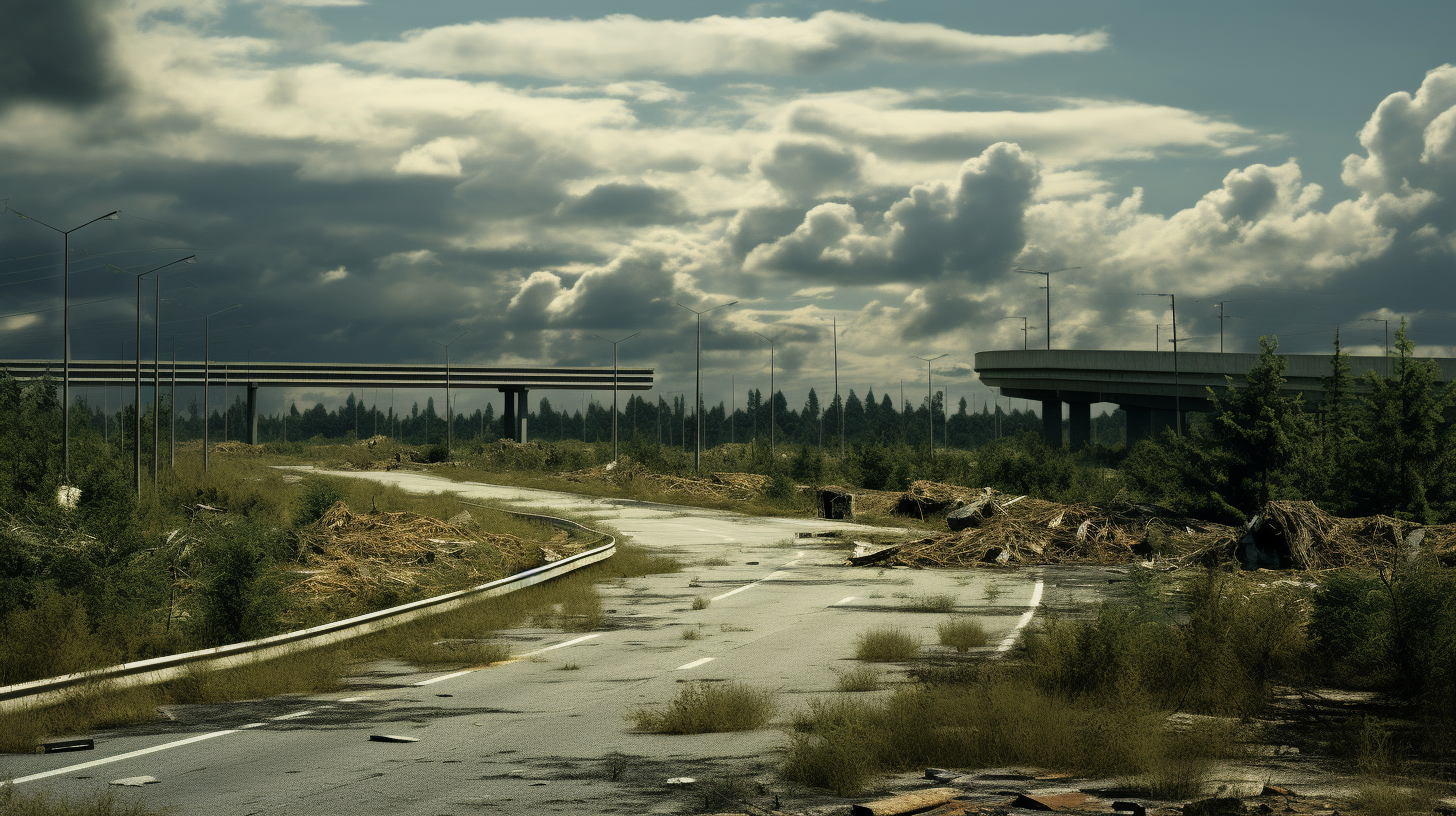Through the cracked windshield of what used to be the embodiment of freedom, the deserted highway sprawls ahead, silent as a grave. The asphalt veins that once pulsated with life now lie as stark reminders of a civilization consumed by its own neglect. What was once a roaring thoroughfare is now the soundless echo of a world left behind.
As one meanders through these concrete skeletons, it’s hard not to feel the weight of the past. Signposts, now bleached by the relentless sun, still point to destinations that are no longer sought after. The ceaseless march of overgrowth claims the man-made landscape, leaving behind the unnerving tranquility of an eerie hush, as nature reclaims its dominion.
Amidst the desolation, wildlife has begun to trickle back onto these human remnants, with coyotes and deer standing as unlikely sentinels over a reclaimed kingdom. Their presence serves as both a testament to resilience and an indictment of the precipice upon which humanity teeters.
The Abandoned Highways — they’re more than just stretches of empty road; they symbolize a collective pause in the habitat of humans, a civilization that raced to the cliff’s edge with little thought of the descent. Climate change, resource depletion, societal upheaval; they all share the blame for these modern-day ruins. But as one travels through this spectral quietude, the message resonates louder than any engine’s roar could: this is the future, unless we act now.
But who is left to act? Scavengers wander, picking through the skeletal frames of vehicles left to rust—a cruel irony—and the only currency left worth anything is the will to survive. Within the abandoned places, echoes of the past tell tales of warning, urging us to take heed. Yet, as humanity has shown, warnings often go unheeded until silence is all that answers back.
The vision is as haunting as it is prophetic: it serves not as a premonition, but as a cold, hard reflection of our present. We find solace in fiction, in stories of apocalypse, as they allow us to disassociate from the truth—that our reality inches ever closer to these narratives of despair.
The silent highways are a caricature of progress, a mockery of the hustle and bustle that once defined our days. To traverse these roads is to journey into the heart of human hubris, to confront the ghosts of ‘could-have-beens’ and ‘should-have-dones’. Yet in this unsettling stillness, stories of the past yearn to ignite the sparks of change in the hearts that still beat for the future.
In the quiet lies a challenge—a challenge to listen, to change, to not accept this disquieting hush as our ultimate legacy. Will there be a whisper of change, or will the silence grow louder, gorging on the absence of human endeavor? The choice remains for those who dare to listen to the tales that these muted highways yearn to tell.
So as the setting sun casts long shadows over this abandoned tapestry, it leaves behind one final question, lingering in the air like the dust once kicked up by a billion tires—Is this the world we’re prepared to leave behind, or will we strive, against the noiseless backdrop, to write a different ending to our story?
